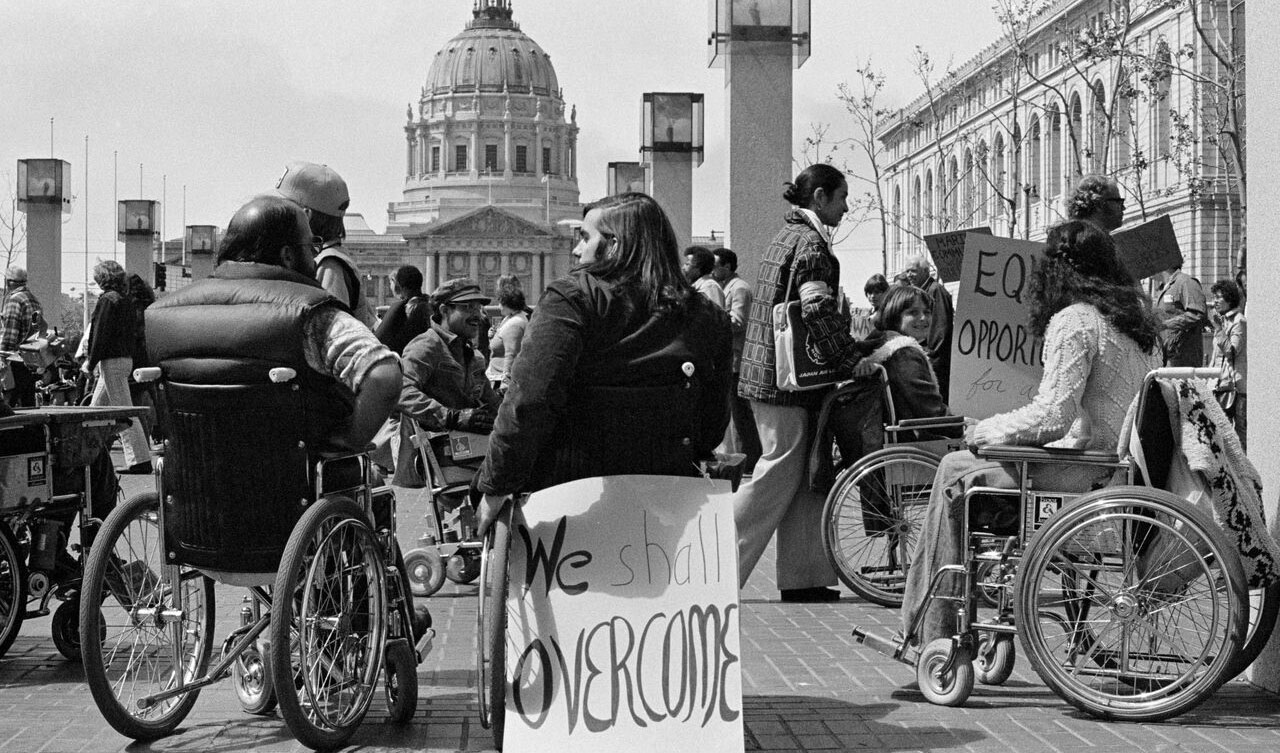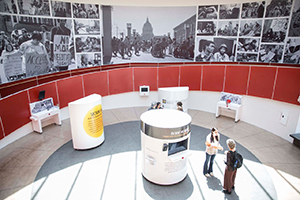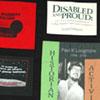New exhibit documents struggle to enact ADA

Protestors demonstrate outside San Francisco's 50 UN Plaza Building in April 1977. Credit: Anthony Tusler
For many young people, the Americans with Disabilities Act (ADA), enacted 25 years ago, is an accepted and understood fact of life. But a new exhibit from SF State's Paul K. Longmore Institute on Disability provides a window into the struggles necessary to make the landmark civil rights law a reality.
"Patient No More: People with Disabilities Securing Civil Rights" is on display through Dec. 18 at the Ed Roberts Campus in Berkeley. The multimedia, interactive exhibit documents how more than 100 individuals with disabilities occupied 50 UN Plaza in San Francisco for nearly a month in April 1977. Their demand: the signing of a precursor to the ADA known as "Section 504." Backed by organizations such as the Black Panthers, Delancey Street and Glide Memorial Church as well as politicians including Philip Burton, George Miller and San Francisco Mayor George Moscone, the demonstrators emerged victorious after 26 days.

"Patient No More" runs through December and documents the 1977 protest that was a key moment in the fight for disability rights. Credit: Hannah Anderson, College of Liberal & Creative Arts Communications
"Most people think the ADA was handed down from government, but it has a deep grassroots history forged by disability rights activists right here in the Bay Area," said Catherine Kudlick, a professor of history at SF State and director of the Longmore Institute. "This was the longest occupation of a federal building in U.S. history, and yet very few people know about this amazing story."
One in five Americans identify as having significant disabilities, according to the U.S. Census Bureau.
The Longmore Institute is named after the late disability rights activist and SF State Professor of History Paul K. Longmore, who engaged with constituencies both inside and outside the University to promote new ideas about disability and disabled individuals.
At the exhibit, visitors can view 11 video stories woven together from interviews with surviving participants of the occupation such as Elaine Brown, head of the Black Panther Party; Judith Heumann, special advisor on disability rights for the U.S. State Department under President Barack Obama; and former U.S. Congressman and SF State alum George Miller (B.A. '68). SF State journalism and history students conducted the interviews.
In addition to looking back at the 50 UN Plaza occupation, "Patient No More" also builds upon the progress attained by the ADA and shares best practices for carrying the law into the 21st century. The exhibit has built-in accessibility features to accommodate individuals with various cognitive disabilities or vision, hearing and mobility impairments.
“We wanted everyone to get something out of the exhibit, and we know that all visitors will discover something new thanks to these access features, whether they need them or not," Kudlick said.
"The 504 demonstration is not only unknown in the Bay Area, it's surprisingly unknown in disability communities too. By teaching this history, we are confident that we can change people's limited perceptions of people with disabilities," said Emily Smith Beitiks, associate director of the Longmore Institute, who added that the San Francisco protests, unlike others across the nation, were successful because of the city's network of activists and culture of social justice.
"This is just an incredible Bay Area story that we all should know."
"Patient No More" is being presented by the Longmore Institute, with additional support from a Cal Humanities "Community Stories" grant, the East Bay Community Foundation and SF State's Office of Research and Sponsored Programs. The exhibit will be held at the Ed Roberts Campus in Berkeley through Dec. 18, and a smaller traveling version of the exhibit will visit various locations throughout California starting at the SF State Administration Building lobby. An SF State launch celebration will be held from 4 to 6 p.m. on Aug. 21. For more information, visit www.patientnomore.org or follow the conversation on Twitter via #PatientNoMore.


